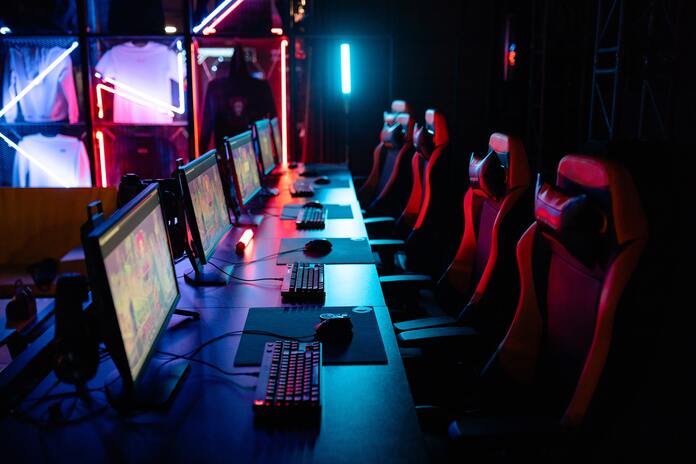The Role of Web3 in Gaming and Esports

A new era of decentralization has emerged with the rise of Web3 technology, offering solutions to some of the most significant global problems that various businesses face. To create exciting and competitive settings for players and viewers alike, the gaming and esports industries face unique hurdles. There is a silver lining in the form of vast and exciting potential for Web3 technology to transform these sectors completely.
Web3 gaming has transformed players’ experiences and interactions with their favorite games and producers by adding blockchain gameplay and technical builds. The esports business has experienced rapid growth over the past ten years, advancing the organized, competitive side of gaming.
Here’s what Web3 has introduced and what it means moving forward.
Web3 Gaming and Esports
The terms “web3” and “metaverse” are trendy in the tech community. According to data from Web3 experts in Bitai Method Official, which cites recent funding rounds like Polygon Technologies and Alchemy for a combined $650 million, the hunger among investors has caused a “cascade” of investment into blockchain platforms. Gaming is one industry sector that is getting more attention than most.
A new Web3 venture fund narrowing in on the metaverse, gaming, and social applications was unveiled at the beginning of March by a group of influential investors that included billionaire Bill Ackman and gaming behemoth Animoca Brands. Griffin Gaming Partners, a VC fund focused on the gaming industry, revealed it had raised $750 million around the same time.
Decentralization, which refers to the dispersion of authority and decision-making throughout a network of nodes rather than a central authority, is one of the fundamental tenets of Web3 technology. Decentralization benefits game ecosystems in several ways, including better security, democratic decision-making, and transparency.
Enhancing game experiences is one of Web3’s most important advantages for gaming. Game creators can use blockchain technology and decentralized networks to produce distinctive in-game items and experiences that are more immersive and captivating for gamers. Blockchain-based games feature player ownership of virtual goods that can be exchanged, purchased, or sold on markets, opening up new possibilities for players and investors.
Web3 technology can aid in the creation of more open and equitable gaming environments. Decentralized gaming ecosystems can promote more player-driven game creation and governance by fostering more democratic decision-making and consensus-building among players. This can assist in avoiding pay-to-win scenarios and player exploitation, which are significant criticisms of traditional gaming methods.
Gamers may benefit from greater security and privacy thanks to Web3. Decentralized networks are more resistant to intrusions and hacking attempts, which can help to safeguard user data and lower the possibility of fraud or cheating in online gaming. Additionally, Web3-based gaming can give players more privacy by preventing the sharing or selling of
their personal information to outside parties.
What Does Web3 do in Esports?
Esports has quickly become a significant force in the gaming industry, attracting millions of players and followers worldwide. The esports business does, however, confront several difficulties, such as issues with player salary, sponsorships, and league governance. These issues might be resolved with Web3 technology, opening up fresh possibilities for esports competitors, teams, and spectators.
The possibility for more open and equitable remuneration methods in esports is one of Web3’s most important advantages. By removing middlemen and lowering the danger of abuse, blockchain technology can enable more direct payment systems between athletes, teams, and sponsors. The development of more equal remuneration structures, wherein players and teams are equitably compensated according to their abilities and performance, can be aided by this.
NFTs to Change Gaming and Esports
Digital assets that are distinct and inseparable are known as non-fungible tokens (NFTs), which enable the ownership and transparent transfer of digital assets. In the gaming and esports industries, NFTs are a hot topic since they present new potential for players, teams, and fans.
The ability to develop original in-game objects and experiences is one of the advantages of NFTs in gaming and esports. Ownership and trade of virtual assets, such as in-game items, skins, and avatars, can be made possible by NFTs, opening up new revenue streams for creators and users. Furthermore, because NFTs are one-of-a-kind and cannot be duplicated or copied, they can increase the legitimacy and scarcity of these assets.
NFTs can also open up new financial opportunities for esports athletes and teams. Teams and players can develop distinctive digital assets, such as custom avatars or in-game goods, and sell them to fans as collectibles or premium experiences. In addition to creating new cash streams for athletes and teams, this may create new fan interaction options.
NFTs can increase the security and transparency of in-game transactions. Blockchain networks store NFTs, creating a transparent and unchangeable record of ownership and transfer. This can increase security for players and spectators by lowering the possibility of fraud and hacking in online gaming and esports.
Limitations of Web3 in Gaming and Esports
Although Web3 technology presents the gaming and esports industries with intriguing prospects, it also has several drawbacks and constraints that must be overcome to reach its full potential.
Technical complexity is one of the most significant problems Web3 is facing in gaming and esports. Implementing decentralized networks and blockchain technology might be challenging for game producers since they may need more knowledge or resources to create decentralized gaming ecosystems. This may restrict the use of Web3 technology and hinder its development within the sector.
Regulatory ambiguity is another issue that Web3 in gaming and esports must address. For investors and game developers, the legal status of cryptocurrencies, NFTs, and blockchain technology is still up for debate in several jurisdictions. This may make raising capital and creating new Web3-based platforms and games more challenging.
Additionally, Web3’s existing infrastructure is still in its infancy and has only a modest degree of scalability and interoperability. Because of this, building massive gaming ecosystems that can support millions of players and transactions can be challenging. Additionally, smaller game producers and players may need help accessing blockchain networks because of their high transaction fees.
The gaming and esports sectors could be entirely transformed by web3 technology, opening up new options for players, teams, developers, and investors. While Web3 technology can assist in addressing many of the issues these businesses are currently dealing with, decentralized gaming ecosystems and NFTs can produce more transparent, equitable, and entertaining gaming environments. Despite this, technical complexity, legislative uncertainty, and infrastructure constraints must be solved to realize Web3’s full potential in gaming and esports. We can create a gaming and esports ecosystem that is more equal and sustainable by continuing to innovate and work together. We are eager to see how Web3 will revolutionize the gaming and esports sectors as it develops and expands, enabling players, developers, and investors to forge new paths and opportunities.
Featured Image: Pexels @ Yan Krukau
Read more investing news on PressReach.com.Subscribe to the PressReach RSS feeds:- Featured News RSS feed
- Investing News RSS feed
- Daily Press Releases RSS feed
- Trading Tips RSS feed
- Investing Videos RSS feed
Follow PressReach on Twitter
Follow PressReach on TikTok
Follow PressReach on Instagram
Subscribe to us on Youtube
More News
View More




Recent Quotes
View More
Quotes delayed at least 20 minutes.
By accessing this page, you agree to the Privacy Policy and Terms Of Service.